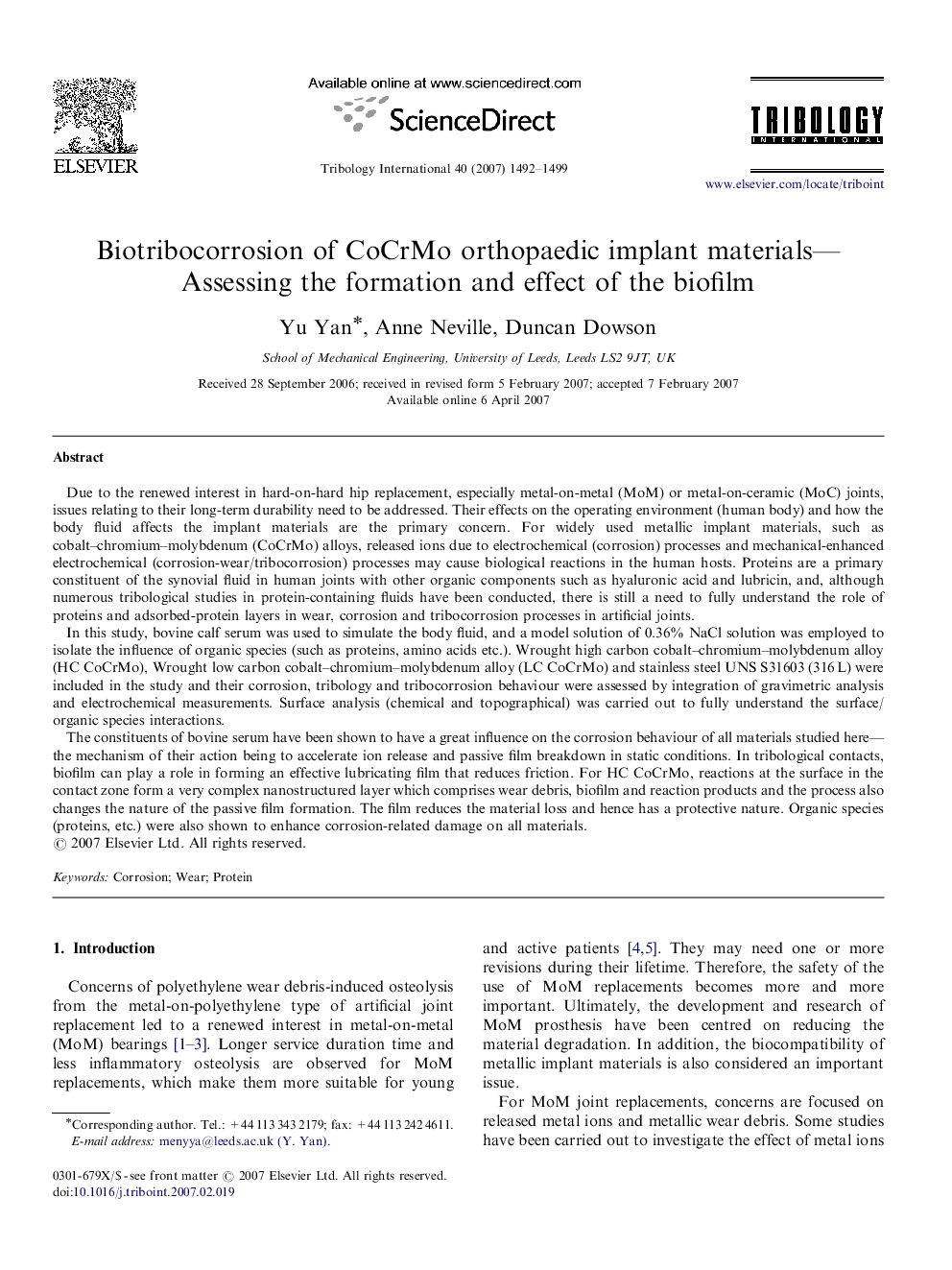| کد مقاله | کد نشریه | سال انتشار | مقاله انگلیسی | نسخه تمام متن |
|---|---|---|---|---|
| 616584 | 1454863 | 2007 | 8 صفحه PDF | دانلود رایگان |

Due to the renewed interest in hard-on-hard hip replacement, especially metal-on-metal (MoM) or metal-on-ceramic (MoC) joints, issues relating to their long-term durability need to be addressed. Their effects on the operating environment (human body) and how the body fluid affects the implant materials are the primary concern. For widely used metallic implant materials, such as cobalt–chromium–molybdenum (CoCrMo) alloys, released ions due to electrochemical (corrosion) processes and mechanical-enhanced electrochemical (corrosion-wear/tribocorrosion) processes may cause biological reactions in the human hosts. Proteins are a primary constituent of the synovial fluid in human joints with other organic components such as hyaluronic acid and lubricin, and, although numerous tribological studies in protein-containing fluids have been conducted, there is still a need to fully understand the role of proteins and adsorbed-protein layers in wear, corrosion and tribocorrosion processes in artificial joints.In this study, bovine calf serum was used to simulate the body fluid, and a model solution of 0.36% NaCl solution was employed to isolate the influence of organic species (such as proteins, amino acids etc.). Wrought high carbon cobalt–chromium–molybdenum alloy (HC CoCrMo), Wrought low carbon cobalt–chromium–molybdenum alloy (LC CoCrMo) and stainless steel UNS S31603 (316 L) were included in the study and their corrosion, tribology and tribocorrosion behaviour were assessed by integration of gravimetric analysis and electrochemical measurements. Surface analysis (chemical and topographical) was carried out to fully understand the surface/organic species interactions.The constituents of bovine serum have been shown to have a great influence on the corrosion behaviour of all materials studied here—the mechanism of their action being to accelerate ion release and passive film breakdown in static conditions. In tribological contacts, biofilm can play a role in forming an effective lubricating film that reduces friction. For HC CoCrMo, reactions at the surface in the contact zone form a very complex nanostructured layer which comprises wear debris, biofilm and reaction products and the process also changes the nature of the passive film formation. The film reduces the material loss and hence has a protective nature. Organic species (proteins, etc.) were also shown to enhance corrosion-related damage on all materials.
Journal: Tribology International - Volume 40, Issues 10–12, October–December 2007, Pages 1492–1499